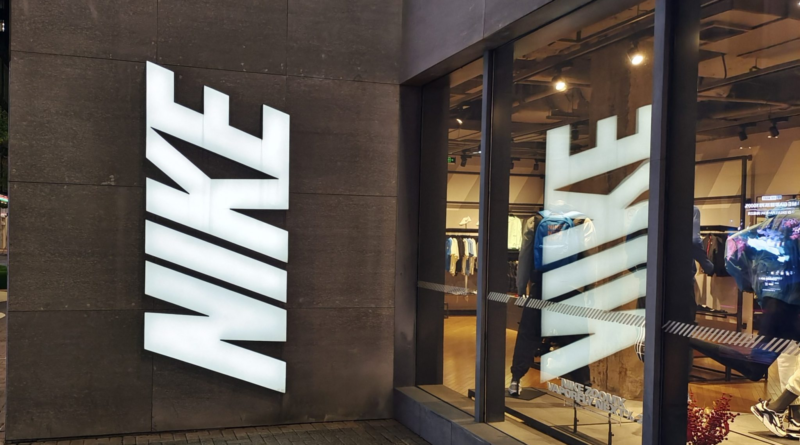Nike’s new CEO is good news—but the CFO will need to help steer a turnaround
Good morning. Nike held its Q1 2025 earnings call on Tuesday—without its outgoing CEO John Donahoe or its incoming CEO Elliott Hill participating. But the sneaker giant’s CFO, Matthew Friend, was on the call explaining Nike’s latest tough quarter and its plans to avert further decline as it goes through transition.
For the three-month period that ended August 31, Nike’s revenue declined 10% year over year to $11.6 billion. Nike Direct sales were down 13%. In addition, it had a 20% decline in digital revenue, and wholesale revenue fell 8%. But Nike stores were up 1%.
The company is moving “aggressively” to shift its product portfolio, create better balance in its business, and reenergize brand momentum through sport, explained Friend, CFO since 2020 and with the company for more than 15 years. “That said, a comeback at this scale takes time; and while there are some early wins, we have yet to turn the corner,” he added.
On Wednesday morning, Nike shares fell about 5%, after the company withdrew its full-year guidance and postponed its investor day indefinitely during Tuesday’s earnings call, Fortune reported.
Turnaround headwinds
Four years after his retirement from the sneaker giant, Hill is returning on Oct. 14 taking on the role of president and chief executive, Nike announced on Sept. 19. Working at the company for 32 years, he held leadership positions such as president of its consumer and marketplace business units and leading commercial and marketing operations for the Nike and Jordan brands.
The headwinds that Friend and Hill face in a turnaround for the company include increased competition, a loss of shelf space with some partners, a lack of new products, and difficult economic conditions, David Swartz, senior equity analyst for Morningstar Research Services, told me.
“Nike has been less competitive in running shoes recently as it pulled its products out of too many stores,” Swartz said. However, the company’s competitors have stepped up with high-quality products that have sold well, he explained. Nike has been reducing its supply of some styles of footwear in an attempt to boost pricing.
“There’s a gap in Nike’s lineup as it develops new products while reducing production,” Swartz said. And Nike cannot fix this problem in the short term, especially as demand in China, North America, and Europe remains poor, he said.
Another issue—the popularity of “terrace”-style shoes. “Nike makes these sorts of shoes, but Adidas is bigger in the category,” he added.
‘Returning to the good old days’
Donahoe, CEO since 2020, will become a full-time non-executive employee of the company until he retires on Jan. 31. Under his leadership, Nike had slashed its revenue forecast for the first time ever in December 2023, Fortune’s Phil Wahba reported. And in June, the company cut its revenue forecast again, leading to its biggest-ever stock decline and a $24 billion drop in market cap.
Coming in as CEO, Hill has worked closely with Friend and many other Nike executives, some of whom have recently returned or been promoted, Swartz said.
“In this way, Nike is returning to the good old days when Mark Parker was the CEO,” he said. Hill is well-liked by employees and executives and has strong knowledge of many parts of Nike’s business, Swartz explained. But in contrast, Donahoe, a veteran technology executive and consultant, was an outsider both to Nike and, for the most part, the industry, he said.
Donahoe underestimated the “importance of partners like Macy’s, DSW and Foot Locker in selling its running shoes,” Wahba writes. And cost-cutting proved to be his go-to tactic, which only worsened Nike’s problems.
During the earnings call, Friend thanked Donahoe for his contributions to the company, such as leading through the pandemic and supply chain disruption, and accelerating digital transformation.
Having had the opportunity to work closely with Hill for many years, Friend said that he leads with a passion that inspires the best from the team.
“It’s fair to say that the partnership between the CEO and CFO should improve under Hill,” Swartz said.
And as CFO, Friend sees the challenges Nike faces as opportunities. “Adversity creates sharper focus, leading to innovation and new growth,” he said on the earnings call.
Sheryl Estrada
sheryl.estrada@fortune.com
The following sections of CFO Daily were curated by Greg McKenna
Leaderboard
Selim Freiha was appointed CFO of Opendoor (Nasdaq: OPEN), an e-commerce platform for residential real estate, and will join the company’s executive team in November. He arrives from Google-parent Alphabet, where he served as a vice president leading corporate financial planning and analysis and previously headed finance for Google Commerce and Payments. Prior to Alphabet, Freiha spent 17 years at eBay in roles such as head of corporate FP&A, CFO of eBay Markets and VP of investor relations.
Jonathan Frates was appointed executive vice president and CFO of SandRidge Energy (NYSE: SD), an oil and gas company, effective Oct. 21. He will succeed current CFO Brandon Brown, who will assume the role of senior vice president and chief accounting officer. Frates has stepped down as the company’s chairman as he transitions to the new role. He most recently served as investment director of Miami-based Vision One Management Partners and has also previously worked as a managing director at Icahn Enterprises.
Big Deal
Investors piled into utilities, energy, and consumer staples as stocks had an unexpectedly strong September, according to monthly sector data from E*Trade that details net buying and selling on its platform. The platform’s clients were net buyers in 10 out of 11 sectors, with financials showing the biggest positive swing after investors sold-off in August.
Chris Larkin, E*Trade’s managing director of trading and investing, said clients jumped on opportunities in energy amid a slump in crude oil and also sought out big retail names like Costco and Walmart as the massive port strike beckoned.
“Traders continued to be somewhat bearish on the health care sector—historically viewed as a defensive position,” he said. “Bottom line: Traders appear to be moving deftly with market fluctuations.”

Going deeper
“How Higher Property Insurance Premiums Mirror Climate Risk,” is a new report from the business journal of the University of Pennsylvania’s Wharton School. Hurricane Helen underscored how several parts of the U.S. face increased disaster risk amid climate change—and insurers have already taken notice.
Premiums for U.S. homeowners surged 33%, or about $500 annually, on average from 2020 to 2023, according to a recent paper from Wharton’s Benjamin Keys and Philip Mulder from the University of Wisconsin. They increased 90% in Florida and 50% in Texas, meanwhile, compared to 2018.
Overheard
“While the president has some tools to combat the housing affordability crisis, they can’t fix it on their own. It’s going to take a coordinated effort between the federal government and local governments over the course of many years, focused on incentivizing more homebuilding to ease a housing shortage that has been brewing since the Great Recession.”
—Daryl Fairweather, chief economist at Redfin, said about the firm’s survey that found more renters believe Kamala Harris is the better presidential candidate for housing affordability, Fortune reported.




